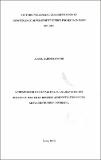| dc.description.abstract | The constituency development fund (CDF) has been viewed as a key strategic driver of social economic development and regeneration within Kenya. It is a development initiative targeted at the constituencies by devolving resources to the region to meet social economic objectives which have previously been managed from the center (GOK, 2007). The key objectives of the fund are to fund projects with immediate social and economic impact with a view to improving lives, alleviate poverty and general development purposes (IEA, 2006). The formation of Constituency Development Fund was an attempt to balance development among the regions in the country by devolving funds proportionate to the poverty index in each constituency. In addition, unlike other development funds that filter from the central government through larger and more layers of administrative organs and bureaucracies, funds under this program go directly to the local levels and thus provide people at the grassroots the opportunity to make expenditure decisions that maximize their welfare consistent with the theoretical predictions of decentralization theory. This study helps shed light on the factors influencing implementation of Constituency Development Funded (CDF) projects. The purpose of the study was to make analysis of the factors influencing the successful implementation of Constituency Development projects. Descriptive study was carried out in the Meru County, were the target population was all the Constituency Development projects initiated in the 2011/2012 financial year. Data was collected from the Constituency Development (CDF) managers in the selected constituencies and project implementers. Purposive sampling was used to select four out of seven constituencies in the Meru County. Stratified sampling was used to select projects from each of the categories; health care, educational, increased productivity and administration and security oriented projects. Data collection was done through questionnaires to the project implementers, interview schedules to the CDF managers and observation checklists was used to gather data concerning the state of the projects as well as the quality of materials and workmanship. The data collected was analyzed and interpreted both quantitatively and qualitatively using statistical package for social sciences (SPSS). From data analysis conducted the results shows that the four independent variables have an influence on project implementation. Conclusion drawn from these findings indicates that 68. 7 percent of independent variable influence implementation of constituency development project while 31.3 percent is influenced by other factors beholds the scope of the study. The following policy recommendations have been proposed to ensure improvement in Project Implementation; Project Coordination between the Central government and the Local Government, Capacity Building of Project Implementers, Review of CDF Legal Framework, and Enhanced Participatory Development by all stakeholders. | en_US |

